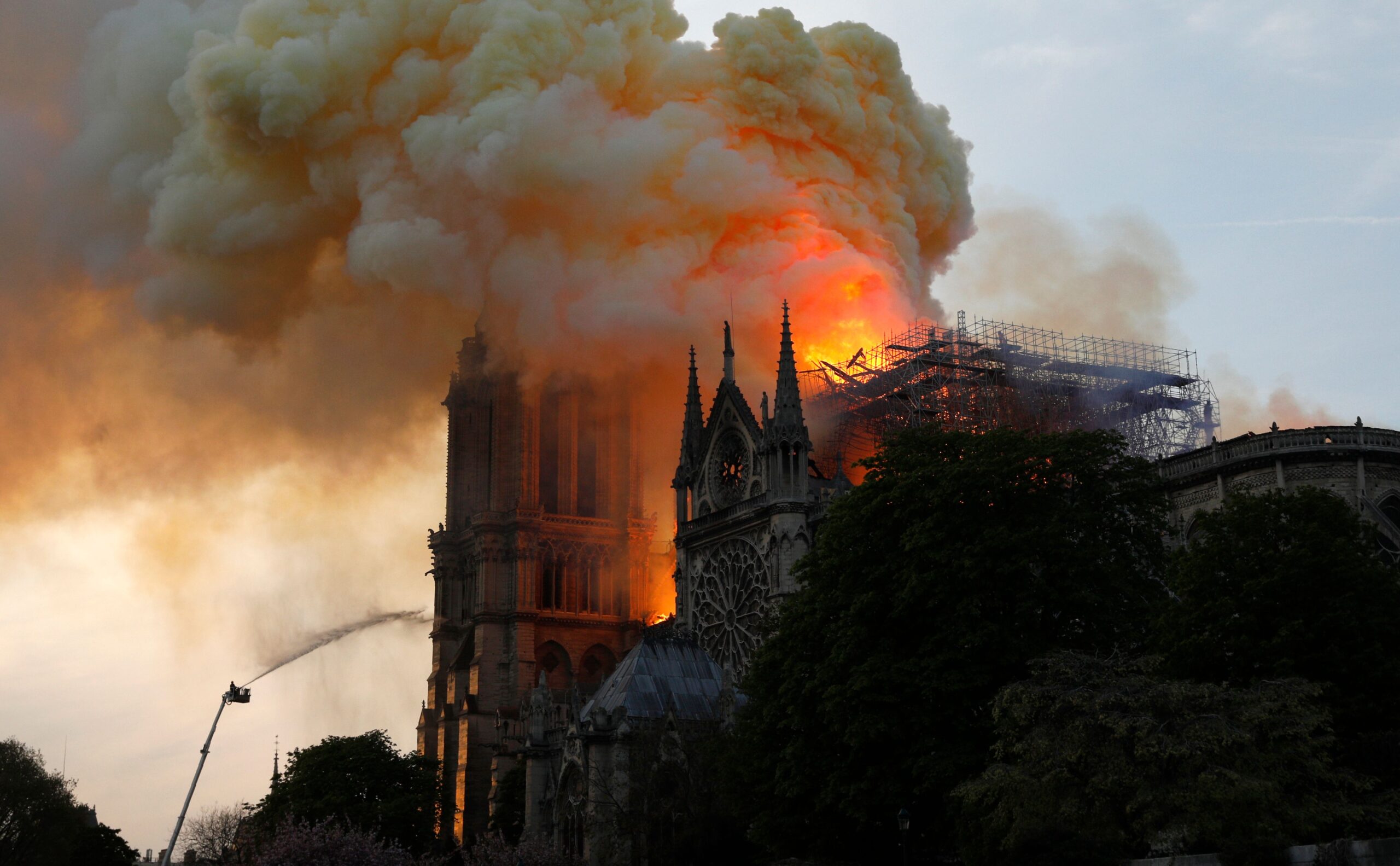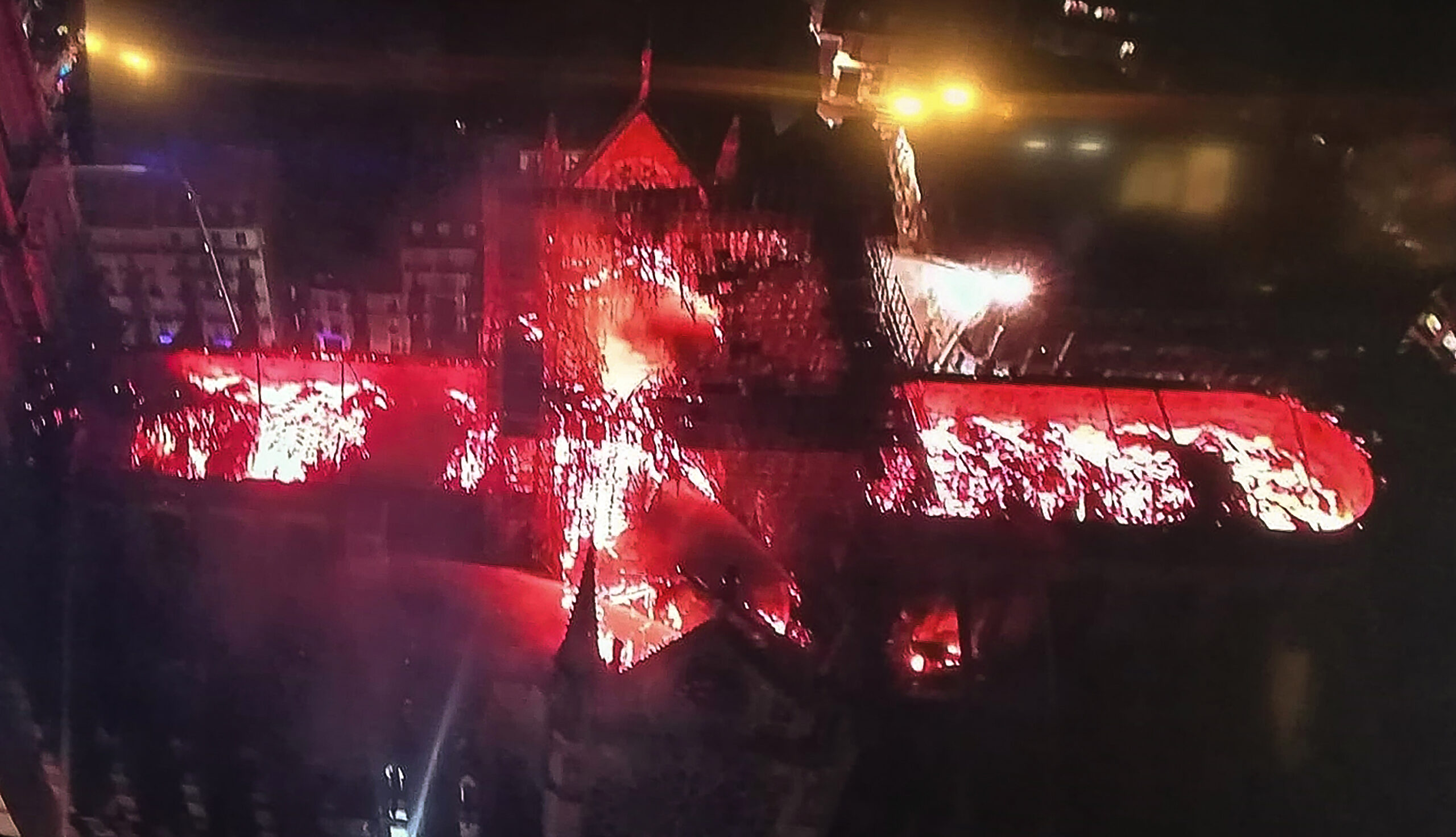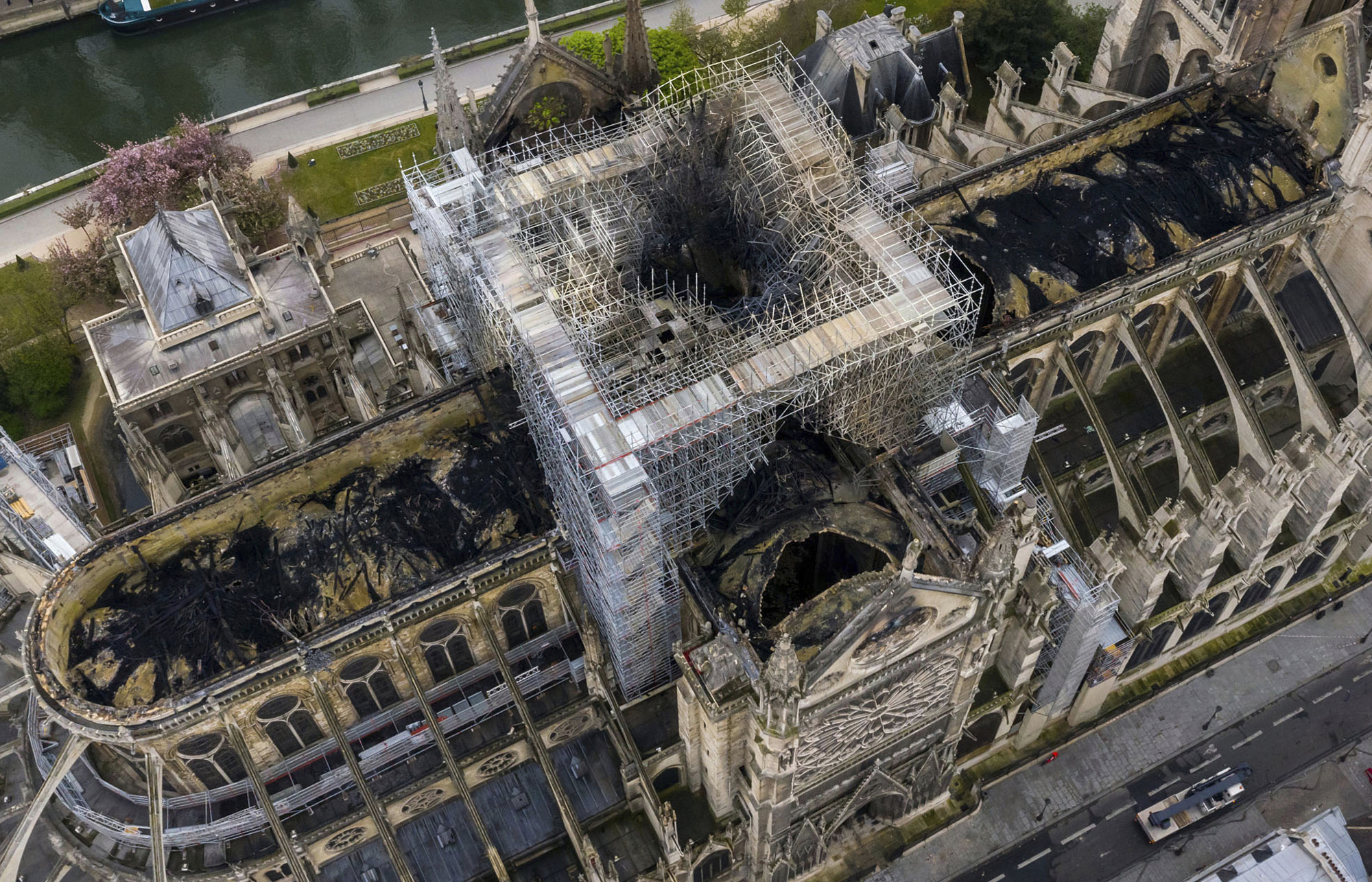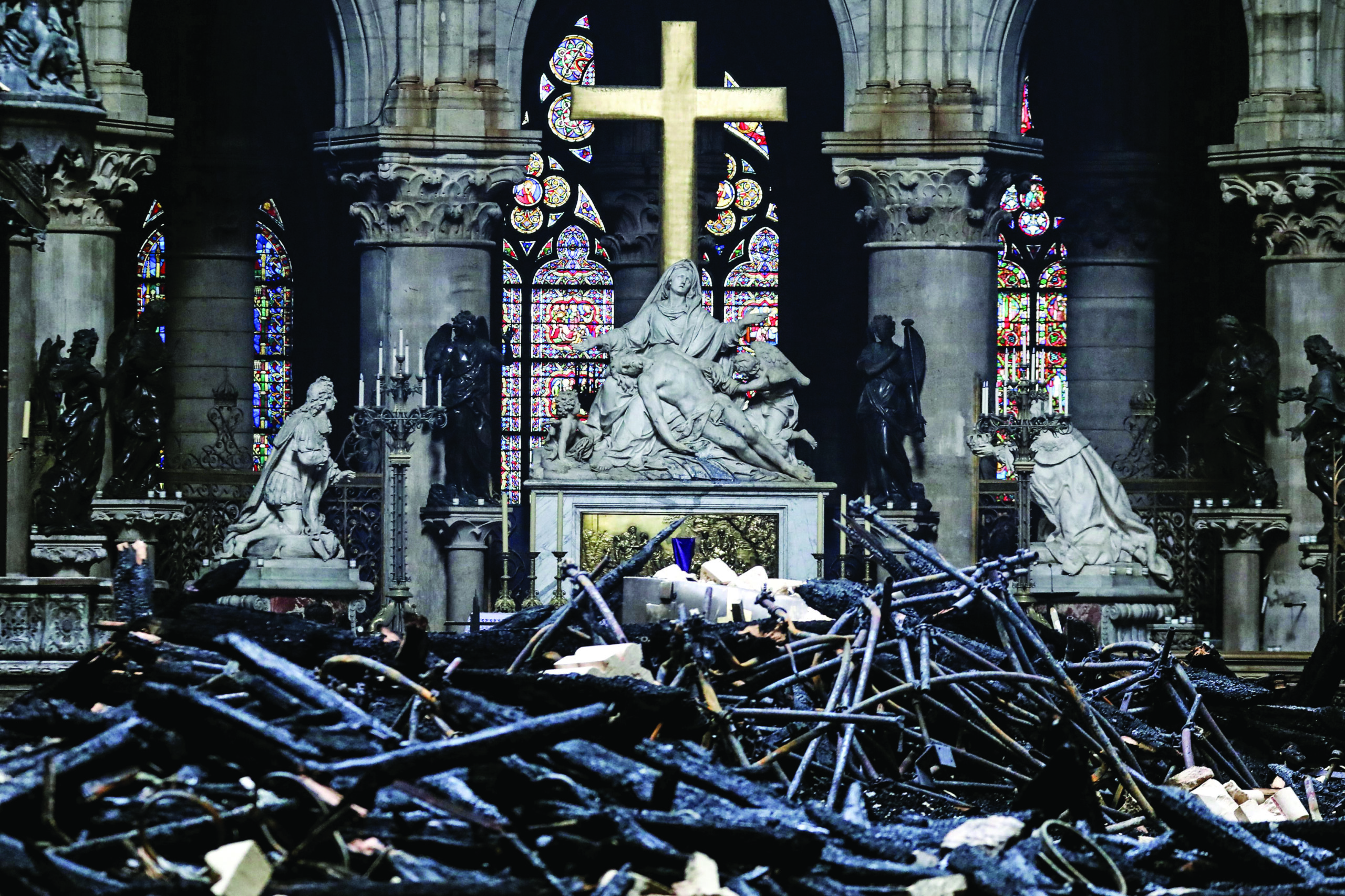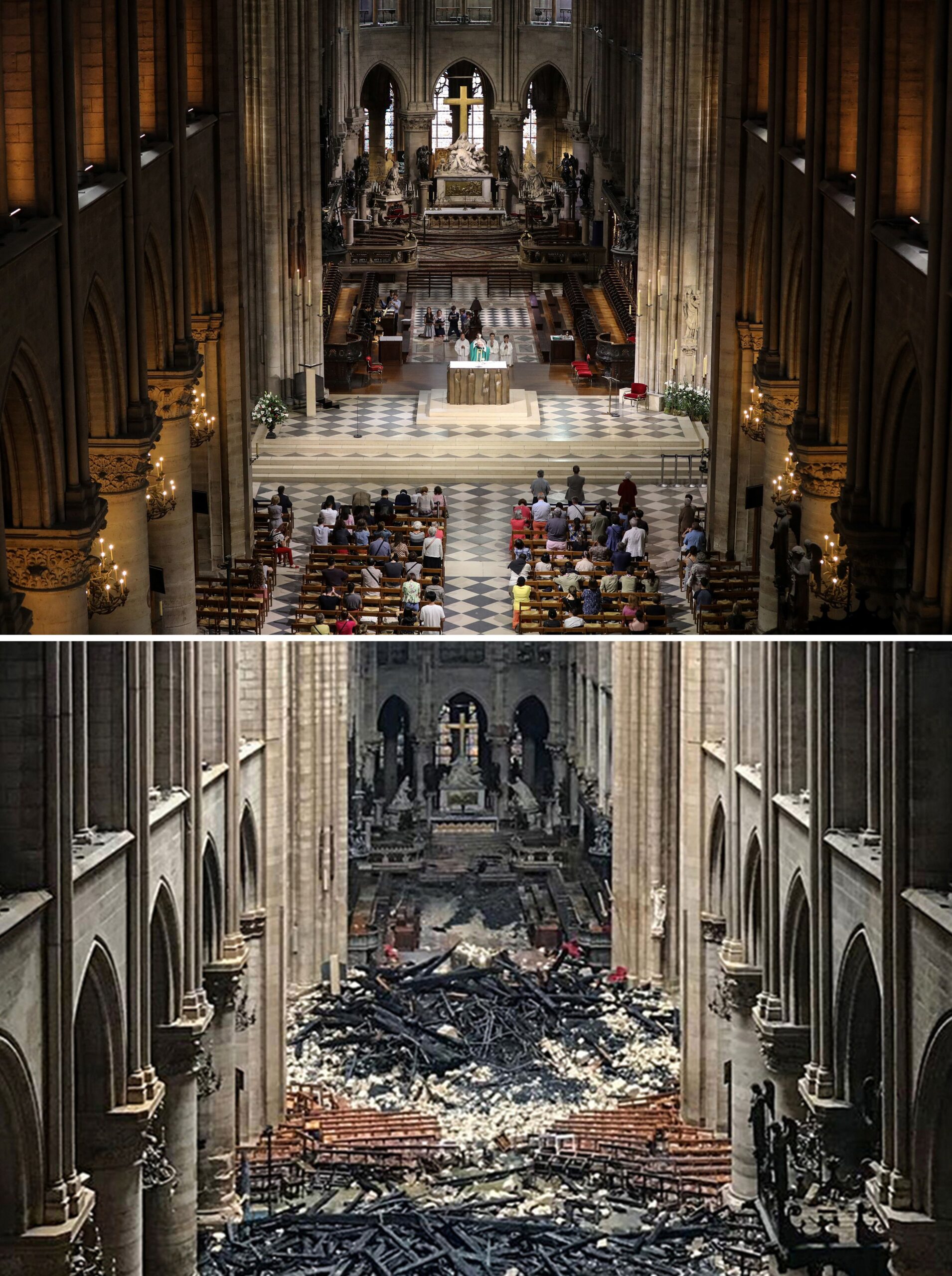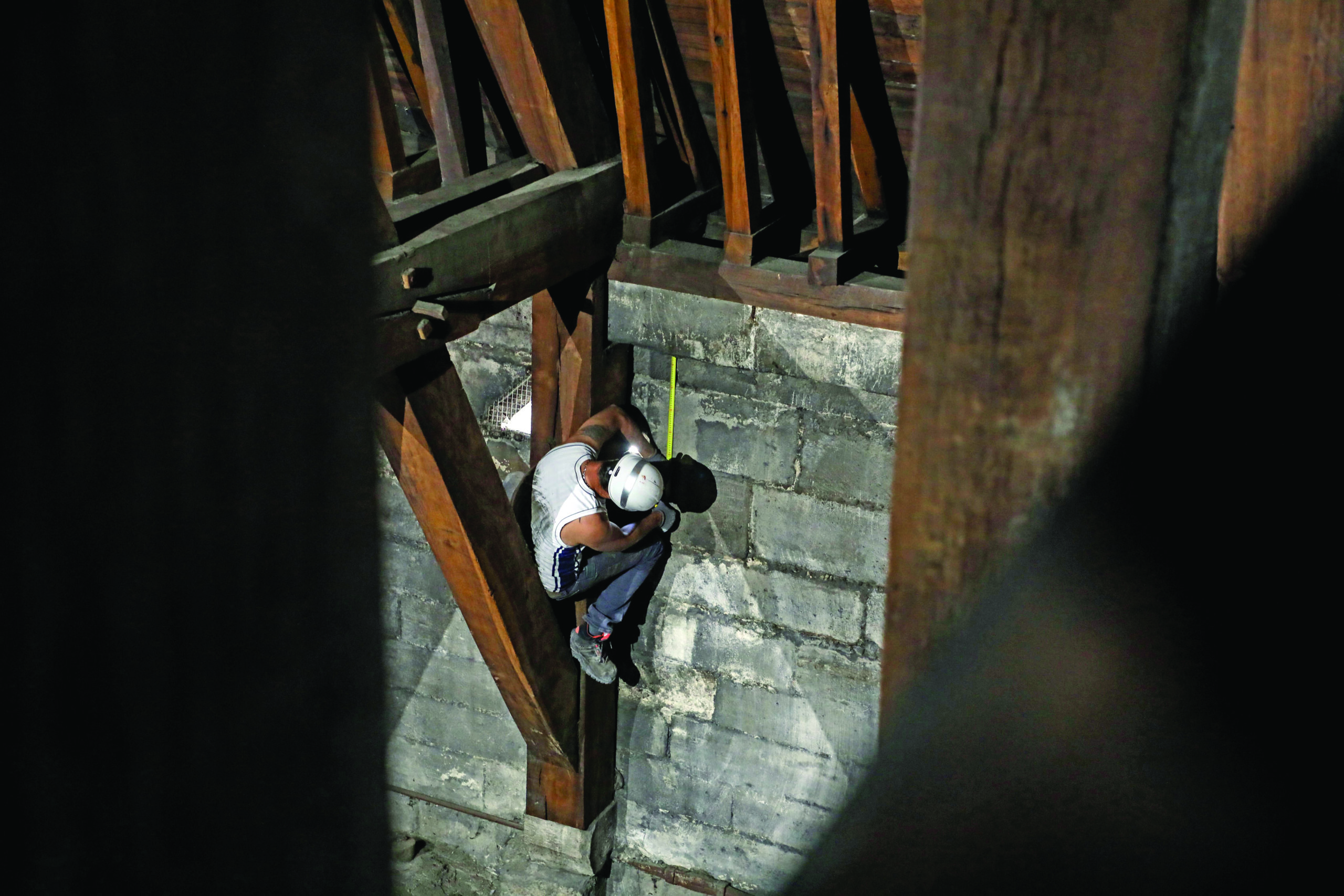During Holy Week, Notre Dame burned. The Catholic cathedral, which has survived nearly a thousand years of wars and revolutions and persecutions and is visited by millions every year, seemed on the verge of utter destruction. Onlookers in Paris sang hymns and prayed. Much of its massive roof burned away, and its giant, lead-and-wood spire collapsed to the ground. But when the flames were finally extinguished after several desperate hours, the cathedral itself, with its famous bell towers and Gothic architecture, still stood.
Notre Dame de Paris, or Our Lady of Paris, was built as a devotional site for Mary, the mother of Jesus. A testament to human ingenuity and the motivational power of faith, it is perhaps the preeminent example of French Gothic architecture and is among the most recognizable Christian sites in the world. The cathedral’s use of ribbed vaulting, a webbed framework of interlocking stone arches, allowed the builders to build higher than was previously possible. So high, in fact, that firefighters struggled to reach its roof with water hoses. And the cathedral’s revolutionary flying buttresses, which provided outer support for the church walls, were designed by the builders to guide a worshipper’s eyes ever upward toward the heavens.
[Related: A hero priest: How the chaplain of the Paris Fire Brigade saved Notre Dame’s most-prized possessions]
Notre Dame was preceded at its location by four different churches and is thought to be built upon the site of an ancient temple dedicated to the Roman god Jupiter. The decision to build the cathedral was made by Maurice de Sully, then the bishop of Paris, in 1160. Its cornerstone is said to have been laid in 1163, and Pope Alexander III and French King Louis VII were rumored to be there for the groundbreaking. Paris’ population at the time numbered fewer than 100,000.
Construction took over 100 years to complete.
Over the centuries, the cathedral went through periods of revival and decay. Gothic architecture fell out of favor during the Renaissance, and the cathedral fell into disrepair. King Louis XIV began to refurbish and renovate it in the early 1700s.
During the French Revolution at the end of that century, Notre Dame was desecrated, and much of its ancient artwork was destroyed. After King Louis XVI was guillotined in 1793, a mob lopped the heads off more than two dozen of the church’s statues depicting kings from the Bible. Revolutionaries rededicated the cathedral to the Cult of Reason and removed statues of the Virgin Mary, replacing them with statues of the goddess of Liberty.
[Opinion: What Notre Dame, the ‘soul of France,’ means to those who have seen it]
Napoleon Bonaparte took power in France shortly thereafter and restored Notre Dame to the Catholic Church. As Pope Pius VII looked on, Bonaparte famously crowned himself emperor of France there in 1804. But the cathedral largely remained in a state of disarray.
Victor Hugo’s book Notre-Dame de Paris, or The Hunchback of Notre Dame — a love letter to the old cathedral — changed all that. In the book, Hugo’s, and Quasimodo’s, poignant thoughts about the cathedral inspired readers across Paris and France. “His cathedral was enough for him. It was peopled with marble figures of kings, saints, and bishops who at least did not laugh in his face and looked at him with only tranquility and benevolence. The other statues, those of monsters and demons, had no hatred for him — he resembled them too closely for that. It was rather the rest of mankind that they jeered at.”
Stirred by Hugo’s romantic depiction of Notre Dame, a restoration effort was undertaken between the 1840s and the 1860s. Jean-Baptiste-Antoine Lassus and Eugene Viollet-le-Duc were selected as architects to revive the medieval cathedral. Some of what is associated with the cathedral, such as its gargoyle statues, was built in the ensuing period as throwbacks to the Gothic era. The tremendous, 300-foot spire that burned to the ground in April was designed and built in 1859.
[Opinion: Notre Dame doesn’t need to be ‘more beautiful than before’]
As Hugo pointed out: “Great edifices, like great mountains, are the work of the ages.”
The cathedral was damaged a bit during World War II but survived mostly unharmed. It was the backdrop for famous photos of American soldiers greeted as liberators on the streets of Paris in 1944 and was the site of a memorial service for President Franklin D. Roosevelt on April 16, 1945. Hundreds of American soldiers filled the crowded pews.
Notre Dame is the repository of hundreds of statues, artifacts, venerated relics, and works of art. Most of these treasures were saved from the fire by the quick actions of firefighters and rescue workers, but some were damaged by the flames. The Crown of Thorns, said to have been worn by Jesus on the cross, was rescued during the blaze. The circlet made of braided reeds was a gift from Emperor Baldwin of Constantinople to King Louis IX in 1239. It was briefly removed from Notre Dame during the French Revolution, but was returned in 1806 and has been there ever since. The Tunic of St. Louis was saved from the blaze. And relics considered by some to be pieces of the “true cross” and the “holy nails” also survived.
There were fears that the cathedral’s Emmanuel Bell, which is found in Notre Dame’s south tower, might crash to the ground during the fire, but it remains intact. Dating back to the 1500s and recast in the 17th century, the 13-ton bell has been a central part of Parisian celebrations for centuries.
Also surviving the blaze were the famed Rose Windows, the three massive, stained-glass windows that serve as the focal point of the cathedral’s major portals. They were designed by Jean de Chelles and Pierre de Montreuil in the 13th century. Unfortunately, other large windows sustained serious damage during the fire.
A marble Pietà from the early 18th century depicting Mary cradling the body of Jesus, titled The Descent from the Cross, was apparently unharmed while surrounded by piles of fallen rubble.
And statues of the twelve apostles and the four Gospel authors that had been arranged near the top of the cathedral were fortuitously removed before the fire as part of continuous renovations, saving them from certain destruction when the spire collapsed.
The great organ of Notre Dame also survived the fire. Originally thought to have been damaged by water as firefighters fought to control the blaze, the famous 8,000-pipe instrument emerged unscathed. “After two hours spent examining the instrumental part, I did not notice any damage that could have been caused by the fire,” said Pascal Quoirin, an expert who helped restore the organ in 2017. Pieces of the organ date back to the Middle Ages.
The copper sculpture of a rooster that topped Notre Dame’s spire was found battered but reparable amid the rubble after the spire collapsed in flames. Another piece of the Crown of Thorns, as well as relics of St. Genevieve and St. Denis, had also been stored inside the spire. Whether these relics survived remains to be seen.
[Opinion: Notre Dame’s lesson for a budding artist]
French President Emmanuel Macron has pledged to rebuild the cathedral “even more beautifully” than before. Donors have already pledged more than a billion dollars to help fund reconstruction.
As Hugo wrote, “Beside each wrinkle on the face of this old queen of our cathedrals, you will find a scar.” After centuries of tumult and perseverance, Notre Dame now has its biggest scar yet.
Jerry Dunleavy is a Justice Department reporter for the Washington Examiner.

